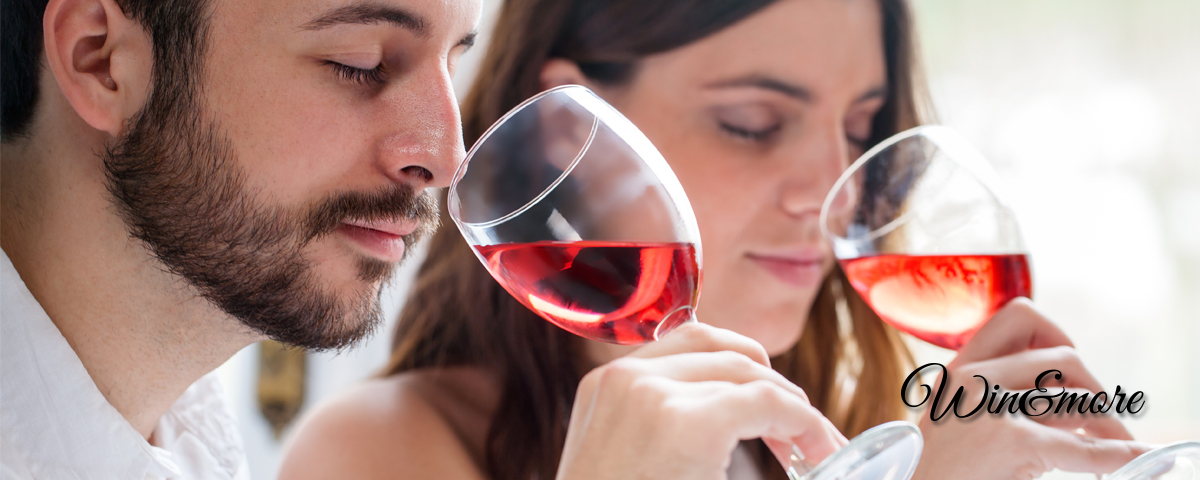Wine tasting is not just simply tasting. It is a technical process that allows us to judge the quality and even possible defect of a wine, through an objective analysis performed by using the senses of sight, smell and taste.
To be specific, with the sensorial analysis of which the organoleptic characteristics of white, red and rose wines are determined is divided into 3 phrases.
1) Visual analysis
This is the first phase of wine tasting and allows, through our sight, to identify what family the wine belongs to based on the colour (white, red or rose) and to give a first evaluation of the product.
The parameters that are observed are:
- colour: the shade of the wine is the first characteristic that jumps to sight
- limpidity or clearness: this parameter is taken into consideration with the presence of hanging particles (better known as sediment)
- texture (for all wines apart from sparkling): this is the classic test that is done by true experts by swirling the contents of the glass around. This permits the observation of the speed of the descent of the drops and the arches on the wall of the glass and consents the union of the alcohol contents and the structure of the wine
- effervescence (only for sparkling wines): this parameter indicates the quality, dimension and persistency of the perlage (the carbon dioxide bubbles that usually characterise this type of wine)
2) Olfactory analysis
Even though the first thing that come to mind is the nose, which is the primary organ for the sense of smell, in order to make this analysis you can also take the wine directly to the mouth instead of the nose. The stimulation of the orthonasal olfaction, via nose or retronasal which permits you to identify:
- aroma: this is described using the family of aromas that it belongs to (floral, fruity, woodsy, mineral, spice aroma, yeast aroma etc). They are split up depending on their origin:
– primary, coming directly for the type of grape used
– secondary, those that are formed to trigger particular chemical reactions during the fermentation process
– thirdly, due to the refund process (such as the aroma of typical yeast in Champagne) - intensity and duration of the aromas
- complexity: the presence of numerous different scents, all individually identifiable
3) Taste analysis
The taste buds present on the tongue act as sensors and are able to recognise and distinguish four basic flavours: sour, sweet, salty and bitter.
This allows for an in-depth analysis of various parameters:
- harness: subdivided into tannins (specific for wines obtained using the vinificazione of red wines and for particular white wines passed in the barrels), acidity and flavour
- softness: depending on the perception of sugar, alcohol or poly-alcohols
- body: through which the structure (or dry extract) of the wine is evaluated, that is its components excluding water and alcohol
- intensity of tactile and flavour sensations
- persistence: that is the number of seconds during which the flavour of the wine remains in the mouth after swallowing
- quality: a judgement rather than a parameter, that sums up what has been tasted
Pop by our winery if you would like to put into practice this brief lesson and try to be a wine taster just like a real sommelier. Find out how to arrange a wine tasting experience with Marchesini wines.



